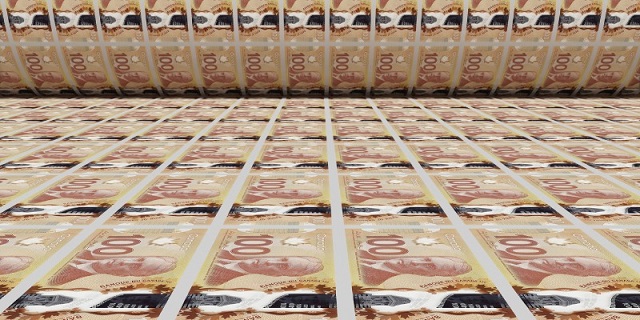Economy
Ruthless, reckless, damaging: the Hon. Steven Guilbeault is MLI’s Policy-maker of the year
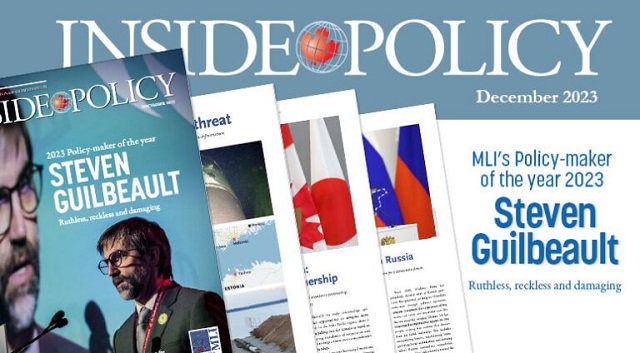
From the MacDonald Laurier Institute
Guilbeault has treated the fact that Canada is a democracy, a market economy, and a federation as inconveniences to be overcome.
The Liberals have been chided for focusing on communications over substance, for announcing policies rather than implementing them. But there is an exception to this rule: the ruthlessly efficient Environment Minister Steven Guilbeault. No one else in Canada has been as influential, and, in my view, no one else has done so much damage.
From an emissions cap to toxic plastic straws, and from Clean Electricity Regulations to the Clean Fuel Standard, Guilbeault has been advancing economy-killing and constitution-defying laws at a frenzied pace.
He was appointed Minister of Environment and Climate Change Canada in October 2021. At the time of his appointment, Guilbeault appeared as the perfect villain: a caricature of the West-hating, anti-oil Liberal that has confounded the aspirations of Canadians west of the Laurentian corridor for decades. In the last two years he has disappointed few of his supporters and assuaged none of his critics’ fears.
Dubbed the “Green Jesus of Montreal” by La Presse, the 2001 image of Guilbeault being walked off in handcuffs in his faux orange prison jumpsuit emblazoned with the Greenpeace logo, following a CN Tower-scaling stunt to bring attention to climate change, features frequently in the social media accounts of his more outspoken critics.
The Canadian oil and gas sector has had a rough decade – from the shale revolution that flooded North America with cheap oil, to the COVID-19 pandemic – but it persisted. The sector achieved record breaking production, and royalties for governments, last year. The coming-into-service of TMX and CGL pipelines promises to grant additional export capacity for Canadian hydrocarbons.
But, like the final boss of a video game, Guilbeault is proving to be a formidable challenger to the country’s most important economic sector, even as the country struggles under declining productivity, persistent inflation and an affordability crisis. What Texas, Putin and OPEC could not undermine, Guilbeault is poised to do. This is intended as criticism but I expect Guilbeault would be pleased with the acknowledgment.
In this year alone he has advanced four sector-destroying policies, as part of the federal government’s much derided “pancake” approach to climate policy: stacking increasingly suffocating and incompatible regulations on Canadian industry to meet our Paris Accord commitments.
Carbon pricing schemes have broadly been accepted within heavy industry across Canada, if grudgingly. But with voters unwilling to accept a price per tonne of GHGs high enough to meaningfully address emissions, the Government has had to resort to additional, bespoke, mechanisms.
The Clean Fuel Regulations (CFR) came into effect on July 1, mandating reductions in the carbon intensity of transportation fuels through various methods, such as blending in biofuels. The Parliamentary Budget Officer found that the CFR are broadly regressive, impacting poorer households the most. The four Atlantic Premiers in particular contested the CFR on the grounds they would disproportionately hurt their residents, calling them “unfair and offensive to Atlantic Canadians” and demanding they be delayed. But Guilbeault blamed any price increase on refiners rather than his regulations, saying “there is simply no reason that they need to push costs onto consumers.”
While imploring refiners to decarbonize their product at a loss, Guilbeault also tacked on a ZEV (zero emissions vehicle) mandate to ensure any investments made in clean fuels today would have an ever-shrinking market and timeline to recoup costs. In other words, Guilbeault is asking refiners to invest in cleaner fuels while promising to ban their products before they could make back their money. The final regulations, mandating a 100 percent zero-emission vehicles sales target by 2035, were announced on December 19.
Such a move requires dramatically more capacity in the country’s electricity grid, up to 25% by some estimates. But, unbothered by the laws of physics, Guilbeault went ahead and introduced draft Clean Electricity Regulations (CER) in August. The CER will impose obligations on electricity generation to achieve net zero emissions in the grid by 2035 and will necessarily take large swathes of Canada’s existing generation capacity offline. In practice this means a phase out of coal, which is happening; and natural gas, which cannot realistically happen – particularly in the cold Prairie provinces of Alberta and Saskatchewan where hydroelectric generating capacity is limited, nuclear is years away, and intermittent wind and solar are unsuitable. The CER prompted Alberta Premier Danielle Smith to launch a national ad campaign protesting that “No one wants to freeze in the dark”.
More sober western voices have also warned against the CER. The CEO of SaskPower sent a letter arguing that while the utility was “on track to meet our commitment to reduce GHG emissions by 50 per cent below 2005 levels by 2030”, the CER are “not possible from technological, financial and logistical perspectives.” But Guilbeault has remained adamant that there will be no special carve outs for any province.
The crowning achievement of Guilbeault’s economy-destroying climate policies was announced on December 7: an emissions cap, and cut, on one sector only, Canadian oil and gas. The announcement was not made in downtown Calgary, amongst those most affected, but in Dubai at COP28. Such a cap is counterproductive, expensive, and both economically and politically self-sabotaging. There is no limit to the punishment Guilbeault is willing to impose on the energy sector, regardless of the collateral damage to the rest of the Canadian economy.
Guilbeault’s accomplishments do not end at stymying Canada’s upstream and downstream oil and gas sector. It’s been a fractious time for federal-provincial relations, and a challenging one for the Canadian Constitution. On a list that included Danielle’s Smith’s Alberta Sovereignty Act and Scot Moe’s Saskatchewan First Act; and invocations by Ontario, Quebec, and Saskatchewan of the notwithstanding clause; it was not one, but two of Minister Guilbeault’s laws that were declared unconstitutional by Canadian courts this year.
In the first instance, the Supreme Court of Canada determined the Impact Assessment Act – previously known as Bill C-69, or the No More Pipelines Act – to reach far beyond federal jurisdiction, granting Parliament “a practically untrammeled power to regulate projects qua projects, regardless of whether Parliament has jurisdiction to regulate a given physical activity in its entirety.” The vast majority of sections within the IAA were deemed unconstitutional.
Guilbeault doubled down, saying that the federal government would “course correct”, but that it would be unlikely to change the outcome of the IAA process for projects.
Just one month later, the Federal Court of Canada held that the federal government’s labelling of all Plastic Manufactured Items (PMI) as toxic was both unreasonable and unconstitutional. Again, Guilbeault was undeterred, and announced on December 8 that the federal government would appeal it.
It appears that, in Guilbeault’s view, federalism is an inconvenient and unacceptable barrier to accomplishing meaningful progress on climate change. For an ideologue like Guilbeault, the Constitution was not designed for, and is not up to the task of, addressing the existential threat posed by fossil fuels. But that is no reason not to try. He will continue to seek new avenues to restrain industry and the provinces; he will just have to tighten up the language.
No amount of tweaking will prevent the Clean Electricity Regulations and oil & gas emissions cap from facing challenges from Alberta and Saskatchewan. The federal government will rely on its criminal law power to see them through. He has suggested that violating the Clean Electricity Regulations, for example running coal fired plants beyond 2030, would be an offense under the Criminal Code. The joke in the Prairies is that he wants his western counterparts to have orange jumpsuits that match his own.
Guilbeault is seen as a true believer. His mission is to save the planet from climate change, and to save oil and gas producing apostates from themselves. Nothing will persuade him he should moderate his efforts. But I would be remiss not to point out that Guilbeault has shown the ability to tolerate pragmatism in his own Cabinet.
The first instance was with nuclear energy. Long a lightning rod for 20th century environmentalists, Guilbeault has historically been opposed to nuclear. In the Liberals’ Green Bond Framework, released in March 2022, nuclear energy was excluded alongside sin industries like tobacco & alcohol sales, arms manufacturing, gambling, and fossil fuels. After public opinion evolved, and in the face of successful nuclear refurbishments and new reactor developments in the GTA, the Liberal government reversed its decision. Guilbeault duly ate his humble pie, saying in April 2023 that:
“In the past I haven’t been the person who supported the most the development of nuclear energy. But when you look at what international experts like the International Energy Agency or the IPCC is saying, they’re saying, to prevent global temperatures from reaching 1.5 degrees Celsius, to achieve our carbon neutrality targets, we need this technology.”
This could not have been easy, and I applaud him for evolving his views in line with the evidence.
But he was not convinced enough to directly advocate for nuclear technology at COP28. On December 2, 2023 in Dubai, 22 states including Canada signed a landmark declaration committing to triple nuclear energy by 2050. Minister Guilbeault seemed to be everywhere at COP28; but he was not there for that announcement, missing the traditional ‘family photo’ of world leaders signing the nuclear declaration.
Likewise, Guilbeault had to accept with great reluctance the Liberals’ political gambit of exempting heating oil from carbon pricing. Their coalition must combine urban environmentalists and Atlantic Canadian townsfolk to win the next election. In the case of heating oil, the Atlantic caucus carried the day. But Guilbeault made clear it was a ploy not to be repeated, telling the Canadian Press in an interview on November 6th that he would not stand for any further concessions:
“As long as I’m the environment minister, there will be no more exemptions to carbon pricing…It’s certainly not ideal that we did it and in a perfect world we would not have to do that, but unfortunately we don’t live in a perfect world.”
Guilbeault is a threat to Canada’s prosperity, and to our allies’ too. Germany, Japan, Korea and others have come asking for more energy exports, only to be told there was no business case. The federal government’s own policies are making it so.
But more to the point his climate policies, committed though they may be, are destined to fail.
It is often said that if you want to go fast, go alone; but if you want to go far, go together.
Guilbeault is very far ahead from industry, the provinces, Canadians, and increasingly his own caucus. He is alienating voters who are concerned more about affordability and housing. There will likely be a backlash. As far as Guilbeault has swung the pendulum to the left, it will come swinging back at him and the Liberals the other way. The energy transition is a marathon, and Guilbeault is a sprinter.
One could almost admire Guilbeault’s unwavering commitment to his principles – his willingness to advance his goals in the face of criticism, resistance and alarm. But through his actions, Guilbeault has treated the fact that Canada is a democracy, a market economy, and a federation as inconveniences to be overcome.
Canadians that care about these things will find many reasons to be concerned with Guilbeault’s efforts this year. His impact on the nation’s politics and economy will be felt long after his policies have been overturned.
Heather Exner-Pirot is the director of energy, natural resources, and environment at the Macdonald-Laurier Institute.
Business
Taxing food is like slapping a surcharge on hunger. It needs to end
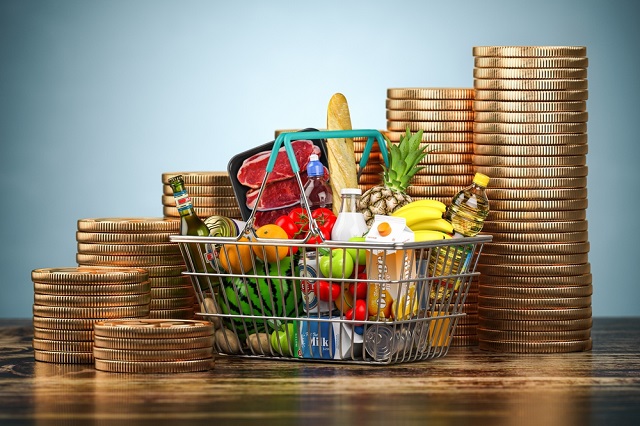
This article supplied by Troy Media.
Cutting the food tax is one clear way to ease the cost-of-living crisis for Canadians
About a year ago, Canada experimented with something rare in federal policymaking: a temporary GST holiday on prepared foods.
It was short-lived and poorly communicated, yet Canadians noticed it immediately. One of the most unavoidable expenses in daily life—food—became marginally less costly.
Families felt a modest but genuine reprieve. Restaurants saw a bump in customer traffic. For a brief moment, Canadians experienced what it feels like when government steps back from taxing something as basic as eating.
Then the tax returned with opportunistic pricing, restoring a policy that quietly but reliably makes the cost of living more expensive for everyone.
In many ways, the temporary GST cut was worse than doing nothing. It opened the door for industry to adjust prices upward while consumers were distracted by the tax relief. That dynamic helped push our food inflation rate from minus 0.6 per cent in January to almost four per cent later in the year. By tinkering with taxes rather than addressing the structural flaws in the system, policymakers unintentionally fuelled volatility. Instead of experimenting with temporary fixes, it is time to confront the obvious: Canada should stop taxing food altogether.
Start with grocery stores. Many Canadians believe food is not taxed at retail, but that assumption is wrong. While “basic groceries” are zero-rated, a vast range of everyday food products are taxed, and Canadians now pay over a billion dollars a year in GST/HST on food purchased in grocery stores.
That amount is rising steadily, not because Canadians are buying more treats, but because shrinkflation is quietly pulling more products into taxable categories. A box of granola bars with six bars is tax-exempt, but when manufacturers quietly reduce the box to five bars, it becomes taxable. The product hasn’t changed. The nutritional profile hasn’t changed. Only the packaging has changed, yet the tax flips on.
This pattern now permeates the grocery aisle. A 650-gram bag of chips shrinks to 580 grams and becomes taxable. Muffins once sold in six-packs are reformatted into three-packs or individually wrapped portions, instantly becoming taxable single-serve items. Yogurt, traditionally sold in large tax-exempt tubs, increasingly appears in smaller 100-gram units that meet the definition of taxable snacks. Crackers, cookies, trail mixes and cereals have all seen slight weight reductions that push them past GST thresholds created decades ago. Inflation raises food prices; Canada’s outdated tax code amplifies those increases.
At the same time, grocery inflation remains elevated. Prices are rising at 3.4 per cent, nearly double the overall inflation rate. At a moment when food costs are climbing faster than almost everything else, continuing to tax food—whether on the shelf or in restaurants—makes even less economic sense.
The inconsistencies extend further. A steak purchased at the grocery store carries no tax, yet a breakfast wrap made from virtually the same inputs is taxed at five per cent GST plus applicable HST. The nutritional function is not different. The economic function is not different. But the tax treatment is entirely arbitrary, rooted in outdated distinctions that no longer reflect how Canadians live or work.
Lower-income households disproportionately bear the cost. They spend 6.2 per cent of their income eating outside the home, compared with 3.4 per cent for the highest-income households. When government taxes prepared food, it effectively imposes a higher burden on those often juggling two or three jobs with limited time to cook.
But this is not only about the poorest households. Every Canadian pays more because the tax embeds itself in the price of convenience, time and the realities of modern living.
And there is an overlooked economic dimension: restaurants are one of the most effective tools we have for stimulating community-level economic activity. When people dine out, they don’t just buy food. They participate in the economy. They support jobs for young and lower-income workers. They activate foot traffic in commercial areas. They drive spending in adjacent sectors such as transportation, retail, entertainment and tourism.
A healthy restaurant sector is a signal of economic confidence; it is often the first place consumers re-engage when they feel financially secure. Taxing prepared food, therefore, is not simply a tax on convenience—it is a tax on economic participation.
Restaurants Canada has been calling for the permanent removal of GST/HST on all food, and they are right. Eliminating the tax would generate $5.4 billion in consumer savings annually, create more than 64,000 foodservice jobs, add over 15,000 jobs in related sectors and support the opening of more than 2,600 new restaurants across the country. No other affordability measure available to the federal government delivers this combination of economic stimulus and direct relief.
And Canadians overwhelmingly agree. Eighty-four per cent believe food should not be taxed, regardless of where it is purchased. In a polarized political climate, a consensus of that magnitude is rare.
Ending the GST/HST on all food will not solve every affordability issue but it is one of the simplest, fairest and most effective measures the federal government can take immediately.
Food is food. The tax system should finally accept that.
Dr. Sylvain Charlebois is a Canadian professor and researcher in food distribution and policy. He is senior director of the Agri-Food Analytics Lab at Dalhousie University and co-host of The Food Professor Podcast. He is frequently cited in the media for his insights on food prices, agricultural trends, and the global food supply chain.
Troy Media empowers Canadian community news outlets by providing independent, insightful analysis and commentary. Our mission is to support local media in helping Canadians stay informed and engaged by delivering reliable content that strengthens community connections and deepens understanding across the country.
Business
Canada Hits the Brakes on Population

The population drops for the first time in years, exposing an economy built on temporary residents, tuition cash, and government debt rather than real productivity
Canadians have been told for years that population decline was unthinkable, that it was an economic death spiral, that only mass immigration could save us. That was the line. Now the numbers are in, and suddenly the people who said that are very quiet.
Statistics Canada reports that between July 1 and October 1, 2025, Canada’s population fell by 76,068 people, a decline of 0.2 percent, bringing the total population to 41,575,585. This is not a rounding error. It is not a model projection. It is an official quarterly population loss, outside the COVID period, confirmed by the federal government’s own data
The reason matters. This did not happen because Canadians suddenly stopped having children or because of a natural disaster. It happened because the number of non‑permanent residents dropped by 176,479 people in a single quarter, the largest quarterly decline since comparable records began in 1971. Permit expirations outpaced new permits by more than two to one. Outflows totaled 339,505, while inflows were just 163,026
That is the so‑called growth engine shutting down.
Permanent immigration continued at roughly the same pace as before. Canada admitted 102,867 permanent immigrants in the quarter, consistent with recent levels. Births minus deaths added another 17,600 people. None of that was enough to offset the collapse in temporary residency. Net international migration overall was negative, at minus 93,668
And here’s the part you’re not supposed to say out loud. For the Liberal‑NDP government, this is bad news. Their entire economic story has rested on population‑driven GDP growth, not productivity. Add more people, claim the economy is growing, borrow more money, and run the national credit card a little harder. When population growth reverses, that illusion collapses. GDP per capita does not magically improve. Housing shortages do not disappear. The math just stops working.
The regional numbers make that clear. Ontario’s population fell by 0.4 percent in the quarter. British Columbia fell by 0.3 percent. Every province and territory lost population except Alberta and Nunavut, and even Alberta’s growth was just 0.2 percent, its weakest since the border‑closure period of 2021
Now watch who starts complaining first. Universities are already bracing for it. Study permit holders alone fell by 73,682 people in three months, with Ontario losing 47,511 and British Columbia losing 14,291. These are the provinces with the largest university systems and the highest dependence on international tuition revenue
You’re going to hear administrators and activists say this is a crisis. What they mean is that fewer students are paying international tuition to subsidize bloated campuses and programs that produce no measurable economic value. When the pool of non‑permanent residents shrinks, departments that exist purely because enrollment was artificially inflated start to disappear. That’s not mysterious. That’s arithmetic.
For years, Canadians were told that any slowdown in population growth was dangerous. The truth is more uncomfortable. What’s dangerous is building a national economic model on temporary residents, borrowed money, and headline GDP numbers while productivity stagnates. The latest StatsCan release doesn’t just show a population decline. It shows how fragile the story really was, and how quickly it unravels when the numbers stop being padded.
Subscribe to The Opposition with Dan Knight
-

 Business1 day ago
Business1 day agoGeopolitics no longer drives oil prices the way it used to
-

 Business1 day ago
Business1 day agoArgentina’s Milei delivers results free-market critics said wouldn’t work
-

 Alberta2 days ago
Alberta2 days agoAlberta’s new diagnostic policy appears to meet standard for Canada Health Act compliance
-
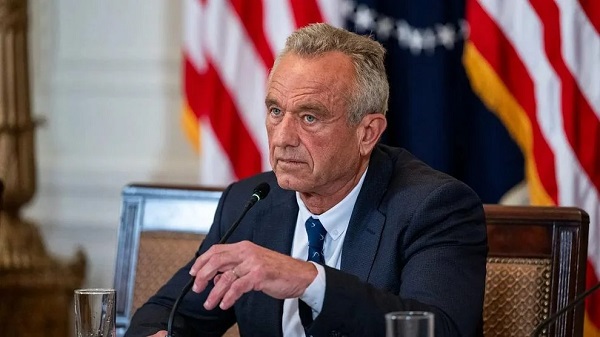
 Health2 days ago
Health2 days agoRFK Jr reversing Biden-era policies on gender transition care for minors
-

 Censorship Industrial Complex2 days ago
Censorship Industrial Complex2 days agoCanadian university censors free speech advocate who spoke out against Indigenous ‘mass grave’ hoax
-

 Business1 day ago
Business1 day agoDeadlocked Jury Zeroes In on Alleged US$40 Million PPE Fraud in Linda Sun PRC Influence Case
-

 COVID-192 days ago
COVID-192 days agoFreedom Convoy protester appeals after judge dismissed challenge to frozen bank accounts
-
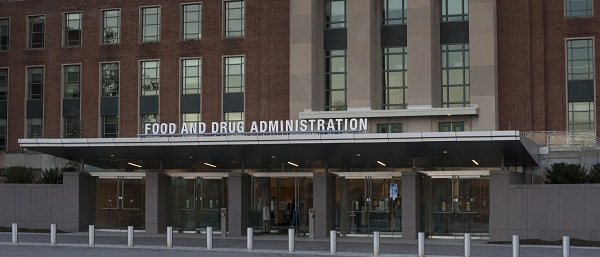
 Daily Caller2 days ago
Daily Caller2 days agoEx-FDA Commissioners Against Higher Vaccine Standards Took $6 Million From COVID Vaccine Makers












